Our Eco-travel Journey: How To Become a No Footprint Traveler
Is truly eco-friendly travel possible? Our friends and fellow digital nomads, Joao and Sara, are passionate about environmentally-conscious travel. Originally from Portugal, they now spend most of the year in Southeast Asia and teach English online. We’re super impressed that they’ve even managed to grow some of their own food while nomading! We asked them to share their experiences of reducing their environmental impact while living abroad and traveling. In this post, Joao has some great travel tips and recommendations for those of us who want to pursue more sustainable, responsible travel.
Disclosure: This post contains affiliate links. That means if you make a purchase through one of the links, No Footprint Nomads may receive a small commission at no additional cost to you. This is a great way to support them for sharing their expertise!
Our sustainable nomads’ story
It was 2010 and we were far from being sustainable or even conscious travelers. We just wanted to see the world and didn’t care much about whoever crossed our way. Alright, being a little melodramatic here but, the reality is, traveling has changed us into better versions of ourselves.
After three years of polishing glasses and serving drinks in London and the Cayman Islands, we started doing something more meaningful: volunteer work. What first had just started as a money-saving strategy became our main way of traveling.
While we were teaching English to kids in a Nicaraguan little village at the border of a volcanic lagoon, our second volunteer project, we meet a German volunteer who first introduced us to the concept of Permaculture.
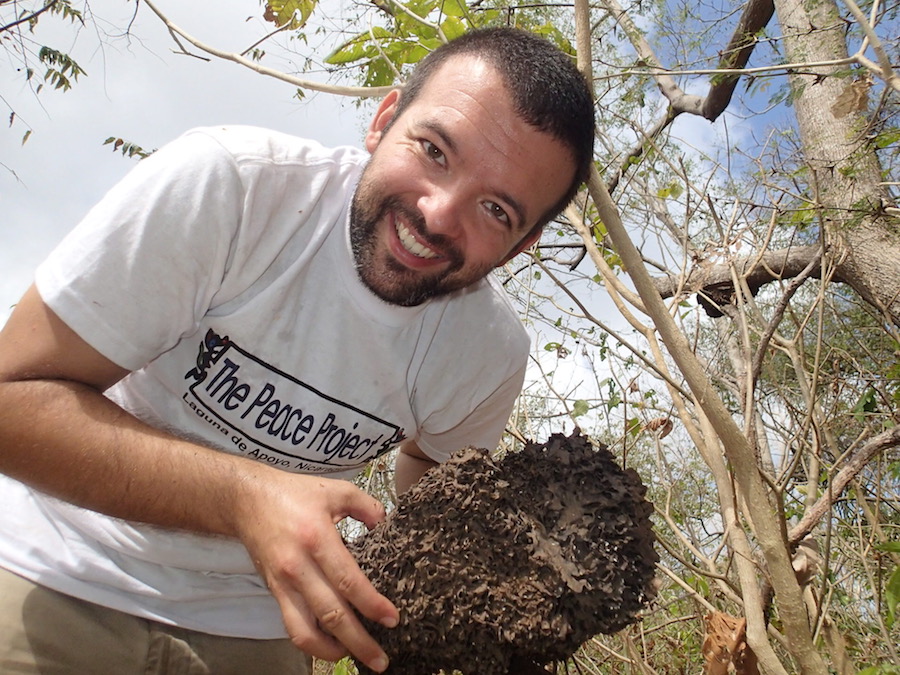
Catching termites to feed the chicken on the Permaculture project, in Ometepe Island, Nicaragua.
Having inquisitive minds like ours, we decided to explore Permaculture and volunteered in an eco-farm in Nicaragua for a week. That was more than enough to have a deep impact on us and I can say, without a doubt, that it was our pivoting moment.
Living and working there with special people, eco-minded conscious volunteers that were there to create a great community and a better world for everyone, touched us in a way that we could no longer go back to our old lives again with the same eyes.
We did go back to living in cities and it was in São Paulo, Brazil, living in a house right in the heart of the city, that we met many like-minded people that also wanted to change our way of living. We participated in courses, workshops, did volunteer work and basically got involved in anything that had to do with sustainability.
Food waste management, composting, eco-building techniques, ethical clothing, carbon footprint reduction, you name it. That was almost like getting a master’s degree in Sustainable Living, ironically in an urban setting.
We decided we needed to apply all of that wealth of knowledge into our nomadic lifestyle, and that’s when No Footprint Nomads project was born.
What changed when we started traveling
The most important change one can make, traveling or living elsewhere, is mindset. Change the lens you normally use to see the world into a more questioning one. Start looking at the world and your actions with a critical mindset, questioning everything, and you will likely get a new perspective.
With a major shift in perspective, into a more sustainable mindset, everything else will start to fall into place, and when I talk about carbon offsetting or of sustainable living, these will be things you will have already thought about.
When you are a traveler, the most significant impact on the environment is flying, so we’ve found a two-fold approach to flights.
First, for smaller trips (less than 1000 miles), we opt for ground transportation, typically the train. Second, whenever possible, we plan trips with fewer legs and prioritize direct flights. There is another approach, not very consensual though, but we’ll discuss it further down in this article when we talk about carbon offset.
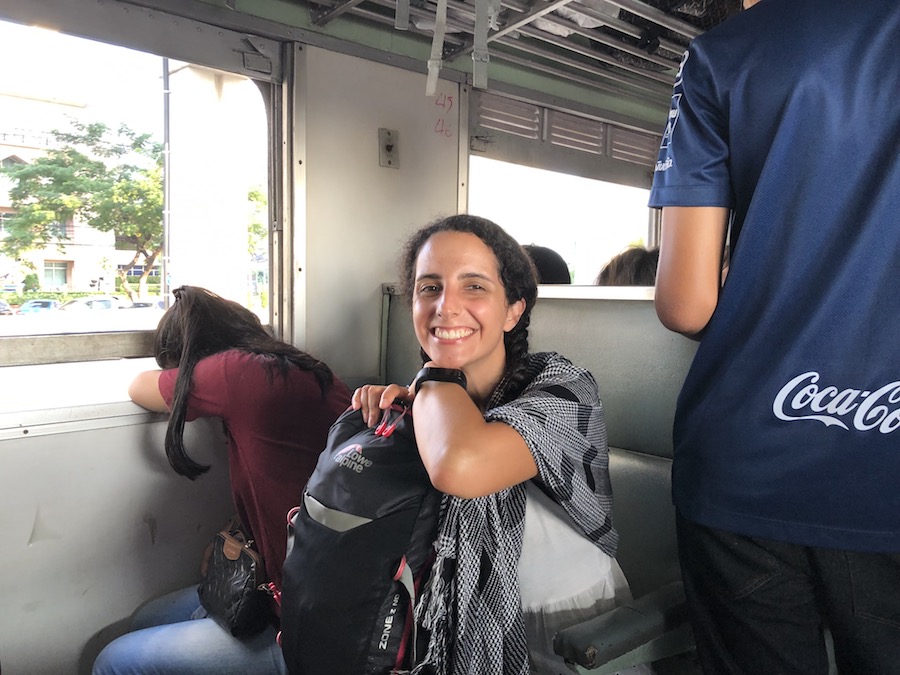
We love to travel by train, especially when you share it with locals.
We also choose our lodgings more carefully, for example, if they are eco-friendly or have any concerns into reducing their social and environmental impacts. You can use sites like Book Different to find suitable options.
For activities or any kind of shopping (which we rarely do), we try to make sure we are using eco-operators (be careful with greenwashing). We try to go to places where we have direct access to the locals so the money goes to the real economy.
Finally, we carry a variety of different objects, which we call “The Sustainability Kit”, but I’ll share more about it later in the article.
Our zero-waste plastic trip (or the impossible challenge)
In July, last year, we kick-started a plastic-free month challenge and decided to try it out during our trip to Vietnam.
We tried to apply the 5Rs, the guidelines for a zero-waste life while visiting Ha Long Bay and Hanoi, and we actually succeeded until one last hurdle right at the end of our trip. Failures aside, the most important is that we understand how difficult it is to be plastic-free particularly on the road, so any effort is commendable.
The first R, Refusing, has to consider a fine balance between doing the right thing and being considered impolite. Refusing any gift, especially if it was accompanied by smiles and insistence, is hard and it’s difficult to explain to someone not so sensitive to the cause why you don’t want it.
Refusing water bottles and other freebies was a constant thing in our trip to Vietnam.
In terms of food, and because we are vegetarians, there were some moments when the only options for us in the supermarket were bread and bananas, which is fine for one breakfast or two but definitely not in the long run.
While it was a great experience for us to undergo this self-imposed challenge, it is still very difficult to travel and not to produce any plastic waste, and many of the options we adopted during that week were not easy to maintain in the long term.
If you’re curious, we did fail our challenge because, at the end of our trip, we bought a couple of postcards and did not realize they were wrapped in plastic. An epic fail, but again it shows how focused one needs to be.
3 eco-friendly things you can do right away or on your next trip
Some easy steps you can take on your next trip:
1. If you use tour companies, look for more conscious tour operators like:
Earth Changers – all kind of travels and purposes
Fair Voyage – eco safaris
Crooked Trails – personalized inspiring tours
2. If you are going to a country with no drinkable tap water, consider taking a water filter like Lifestraw Go.
3. When you purchase your tickets, either by plane or train, check if the company selling them has a carbon offsetting compensation program. If not, check for carbon offsetting companies like Carbon Pirates that we recommend.
Another easy thing to do is to start taking some utensils with you, what we call the sustainability kit.
Our favourite eco-friendly products
Travel Kit
Our favourite eco-travel product is our kit, which is no more than cutlery and some extras used to eat and drink, in order to avoid using disposables.
It is very useful when eating street food, which is a must-do in South East Asia.
Street food in SE Asia is a daily staple.
Our complete kit has plenty of stuff, but we usually recommend what we call the ”starter kit”:
– Travel cutlery
– Reusable straw
– Cloth napkin
We have links for all of them but, in reality, you can DIY the kit yourself from stuff you have at home. Check out our complete sustainable travel kit.
Water purifier
We spoke about the Lifestraw Go bottle which does an amazing job for drinkable water on the go. But, if you want to be 99% sure that the water you are drinking is not contaminated, then you have the magic wand called Steripen.
Steripen is a portable UV light that quickly and effectively purifies water. It uses the same technology as public pools and it’s better than using chlorine.
It works very simply: you just insert it in a 1L water bottle, and swirl for a minute until the light turns itself off, and voilá, ready to drink water from any source.
The only thing it does not do is to remove heavy metals. Steripen does bring you more peace of mind, but the mass majority of non-drinkable water is due to the presence of bacteria, and those are removed simply by using the Lifestraw Bottle.
For more info, see our Steripen comparisons.
Solar panel charger
This is a product nobody ever thinks about, but it has been tremendously useful in our journey. Being able to charge our devices when we are simply walking around the streets of a town is priceless.
Last year, we went to an amazing festival in Thailand, the Wonderfruit festival that lasted for five days, and there were no electrical plugs in sight in the whole festival grounds. Guess who still had a charged phone after the second day! 😉
Sara carrying a portable solar panel while visiting the rice fields in Bali.
For more details on solar travel options, see our post on portable solar panels.
No footprint travel is a mindset
Trying to improve one step at a time is the way to go, and being conscious of the impacts of all our decisions helps.
There is no perfection, as long as you strive to be better and to make the best decisions within your limits, you are already a long way. This is a tough journey and we are here to help each other make our world a better place for all, without having to stop the magic of traveling.
There is no doubt that traveling and sustainability are hard to reconcile, that’s a reason why trying to be a no footprint traveler is even more critical.
 About the Author: João has been on the road since 2010, and a lot has changed in his life. What started with a simple round-the-world trip, with no special plans or purpose, became now a lifestyle. Becoming a digital nomad and being able to travel the world with a no-footprint approach is now his reality, and when he is not researching new ways to travel with less impact, you can find him harvesting greens from his garden to make his beloved green juice, just after morning yoga. He is committed to becoming a greenpreneur and has already co-founded a startup in Brazil, to promote ethical products, almost like a green Amazon, and is now creating his own online zero waste travel brand at No Footprint Nomads.
About the Author: João has been on the road since 2010, and a lot has changed in his life. What started with a simple round-the-world trip, with no special plans or purpose, became now a lifestyle. Becoming a digital nomad and being able to travel the world with a no-footprint approach is now his reality, and when he is not researching new ways to travel with less impact, you can find him harvesting greens from his garden to make his beloved green juice, just after morning yoga. He is committed to becoming a greenpreneur and has already co-founded a startup in Brazil, to promote ethical products, almost like a green Amazon, and is now creating his own online zero waste travel brand at No Footprint Nomads.
Like this post? Pin it for later or share with friends!


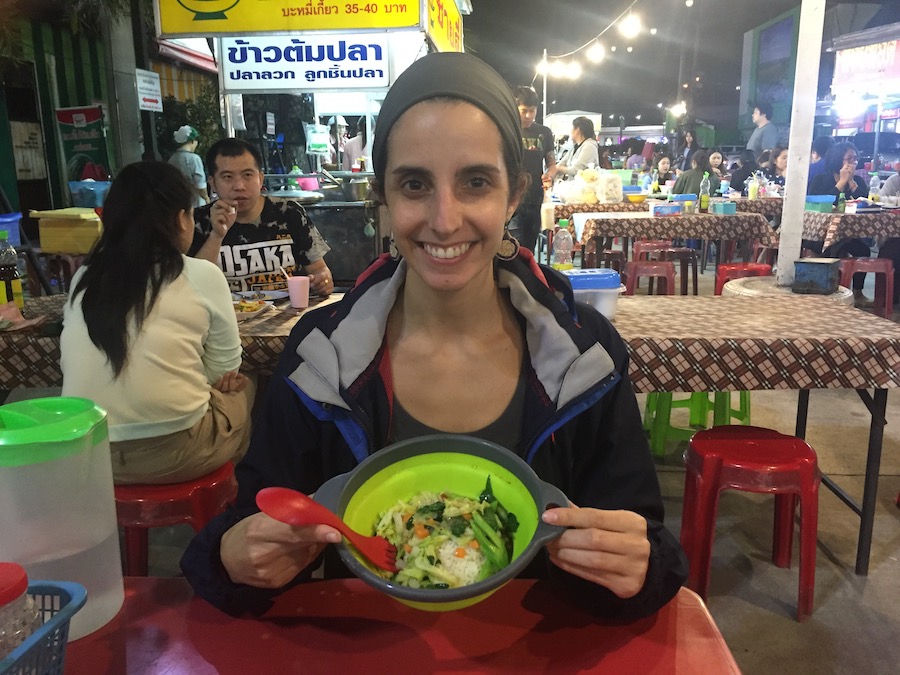

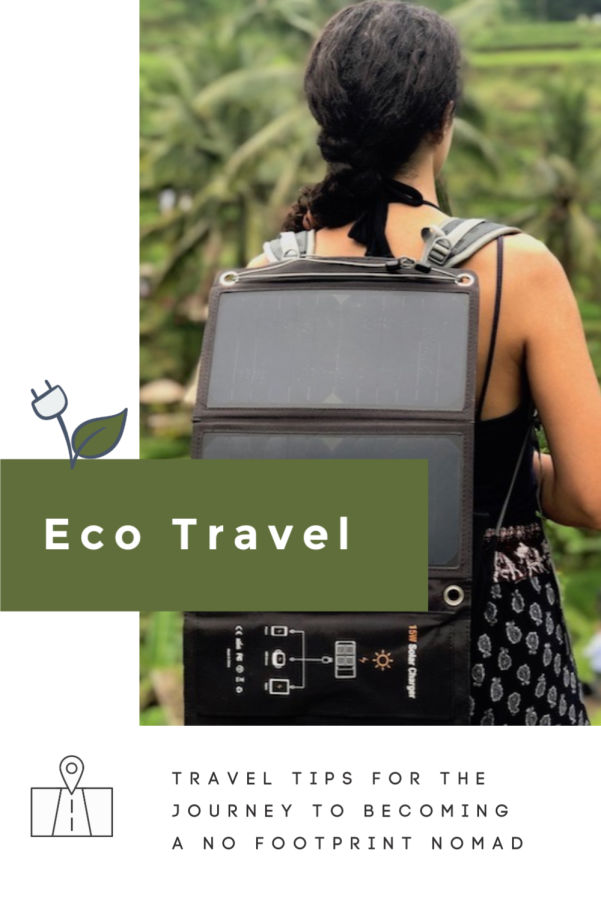
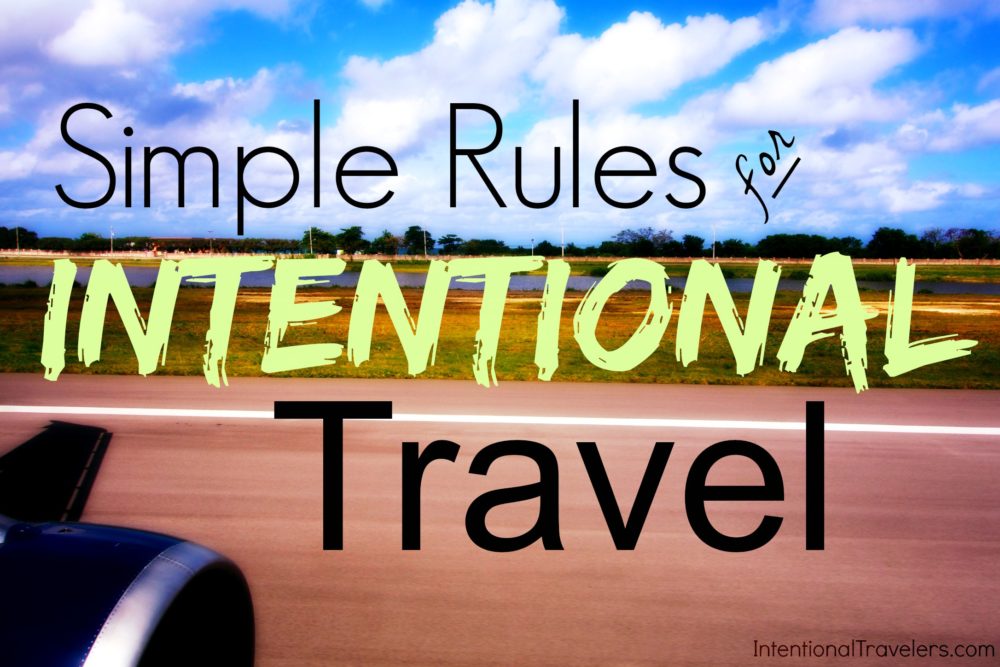
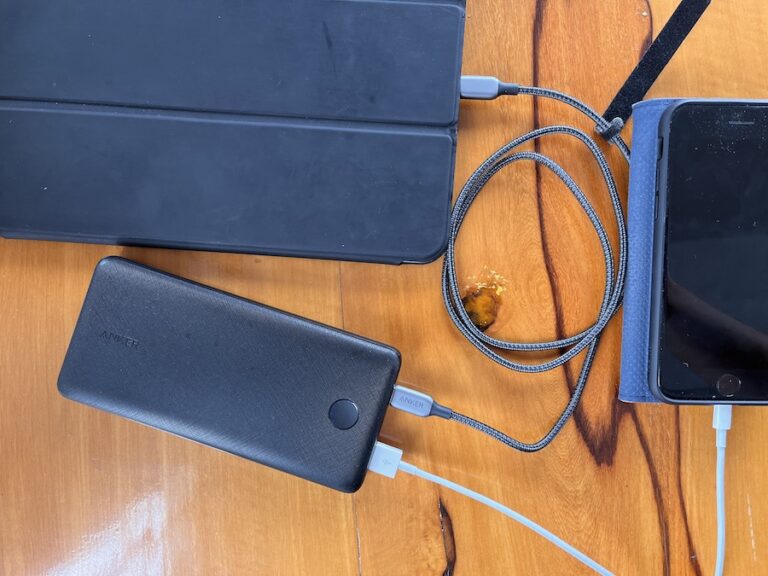
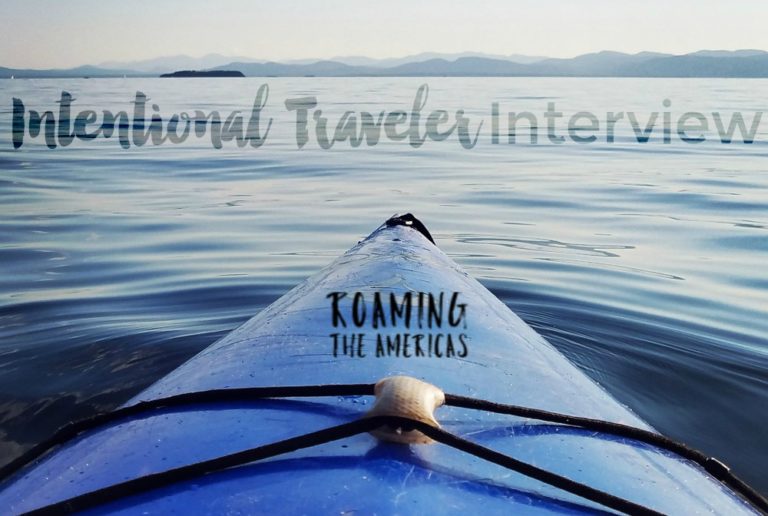
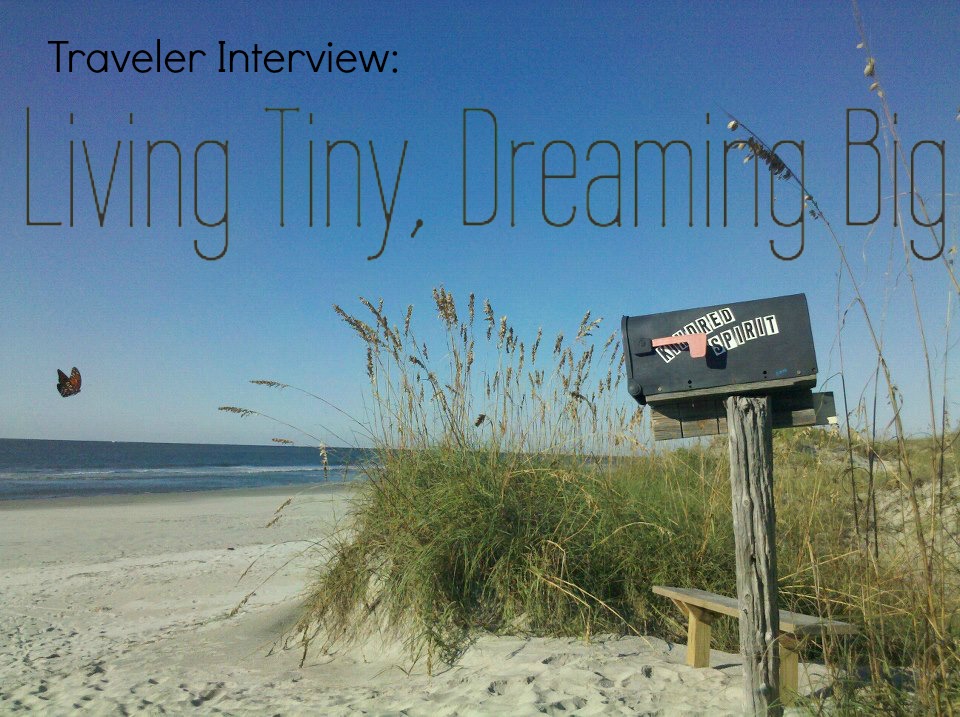

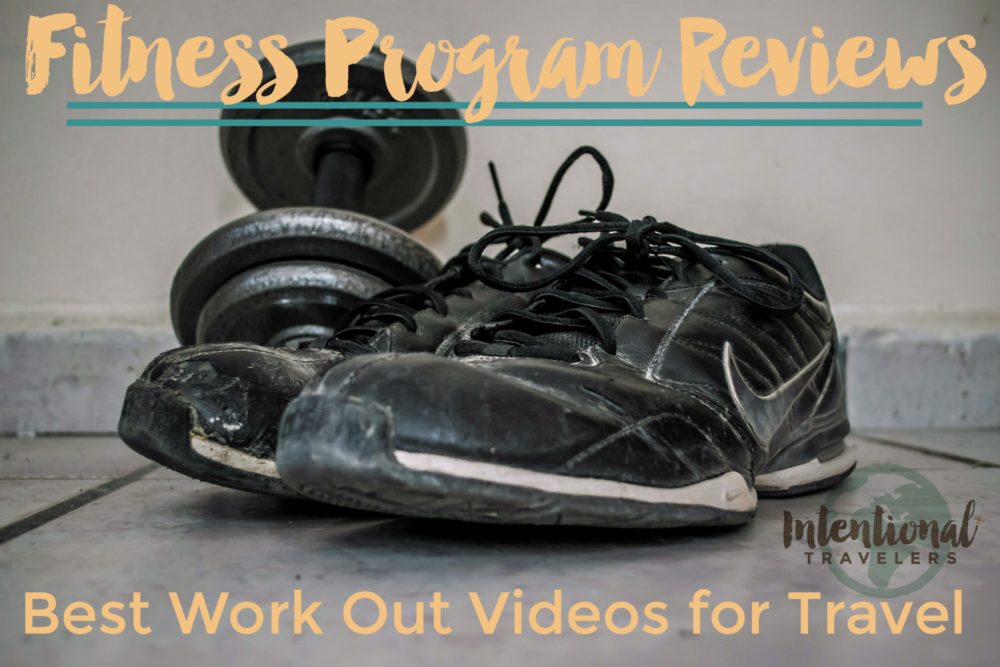
These are some really great tips, it is great to see people taking initiative on these types of things.
Thanks for the mention guys! Vicky, founder http://www.Earth-Changers.com